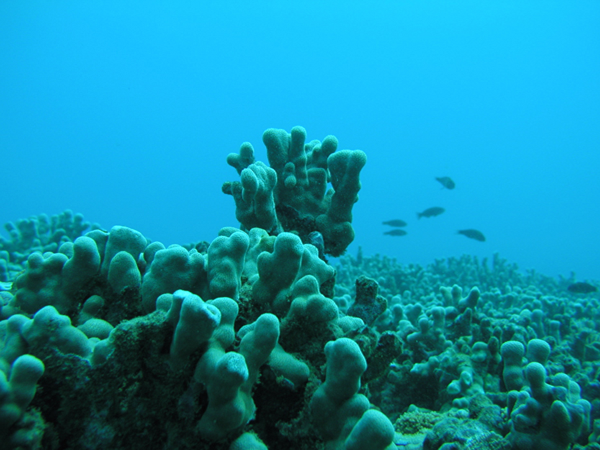
The Importance of Chemotaxis to the Health of Coral Colonies
 Chemotaxis is a mechanism by which organisms navigate their environment using chemical sensors. When mathematician Sasha Kiselev, University of Wisconsin, heard a lecture at the IMA by Jeffrey Weiss, Department of Atmospheric and Oceanic Sciences at the University of Colorado, about broadcast spawning, when egg and sperm are released at separate locations are then brought together by fluid mixing and transport, he became intrigued. Weiss pointed out that fertilization rates are not well understood and that existing models do not fully explain the field observations. He began to question whether there could be other mechanisms involved that could explain the high observed fertilization rates.
Chemotaxis is a mechanism by which organisms navigate their environment using chemical sensors. When mathematician Sasha Kiselev, University of Wisconsin, heard a lecture at the IMA by Jeffrey Weiss, Department of Atmospheric and Oceanic Sciences at the University of Colorado, about broadcast spawning, when egg and sperm are released at separate locations are then brought together by fluid mixing and transport, he became intrigued. Weiss pointed out that fertilization rates are not well understood and that existing models do not fully explain the field observations. He began to question whether there could be other mechanisms involved that could explain the high observed fertilization rates.
His literature search on the subject revealed that there is experimental evidence that chemotaxis plays a role in coral fertilization—eggs release a chemical that attracts sperm. Collaborating with Lenya Ryhzik, Mathematics Department at Stanford University, they developed a model based on the 40-year-old theoretical work of Keller and Segel. Analysis of the proposed model revealed that there is a limit to how much fertilization can occur by advection (fluid flow) and diffusion alone.
They showed that, within the framework of the model, chemotaxis plays a crucial role in enhancing fertilization and that near complete fertilization is possible provided that the chemotactic attraction is sufficiently strong. Their work, which appeared in Communications in Partial Differential Equations in June 2012, suggests that chemotaxis is likely to play an important role in coral life cycle and ecology. Work on more advanced models of the process is currently under way.
Photo courtesy of the U.S. Geological Survey ( www.usgs.gov ).